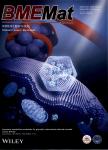版权所有:内蒙古大学图书馆 技术提供:维普资讯• 智图
内蒙古自治区呼和浩特市赛罕区大学西街235号 邮编: 010021

作者机构:School of Chemical Engineering and TechnologyKey Laboratory of Systems Bioengineering(Ministry of Education)Frontiers Science Center for Synthetic Biology(Ministry of Education)Tianjin UniversityTianjinChina Department of Biomedical EngineeringThe State University of New York at BuffaloBuffaloUSA School of Environmental Science and EngineeringCollaborative Innovation Center of Chemical Science and Engineering(Tianjin)TianjinChina State Key Laboratory of Biochemical EngineeringInstitute of Process EngineeringChinese Academy of SciencesBeijingChina
出 版 物:《BMEMat(BioMedical Engineering Materials)》 (生物医学工程材料(英文))
年 卷 期:2025年第3卷第1期
页 面:92-115页
学科分类:081705[工学-工业催化] 08[工学] 0817[工学-化学工程与技术]
基 金:National Key Research and Development Program,Grant/Award Number:2021YFC2102300 National Natural Science Foundation of China,Grant/Award Numbers:22375144,32071384
主 题:cascade enzymatic reactions co‐immobilization enzyme immobilization nanoparticles
摘 要:In order to co‐immobilize multiple enzymes,a wide range of nanomaterials has been designed to achieve synergistic enzyme activity and enhance catalytic ***,as carriers for enzyme co‐immobilization,possess various advantages such as tunable morphology and size,high specific surface area,and abundant chemically active *** can significantly enhance enzyme stability,activity,and catalytic *** overview the commonly used methods and strategies of enzyme co‐*** review further summarizes the latest research advances in nanomaterials for enzyme coimmobilization applications over the past 5 ***,the advantages and challenges of these nanomaterials used for enzyme co‐immobilization as well as some potential future directions are also discussed.